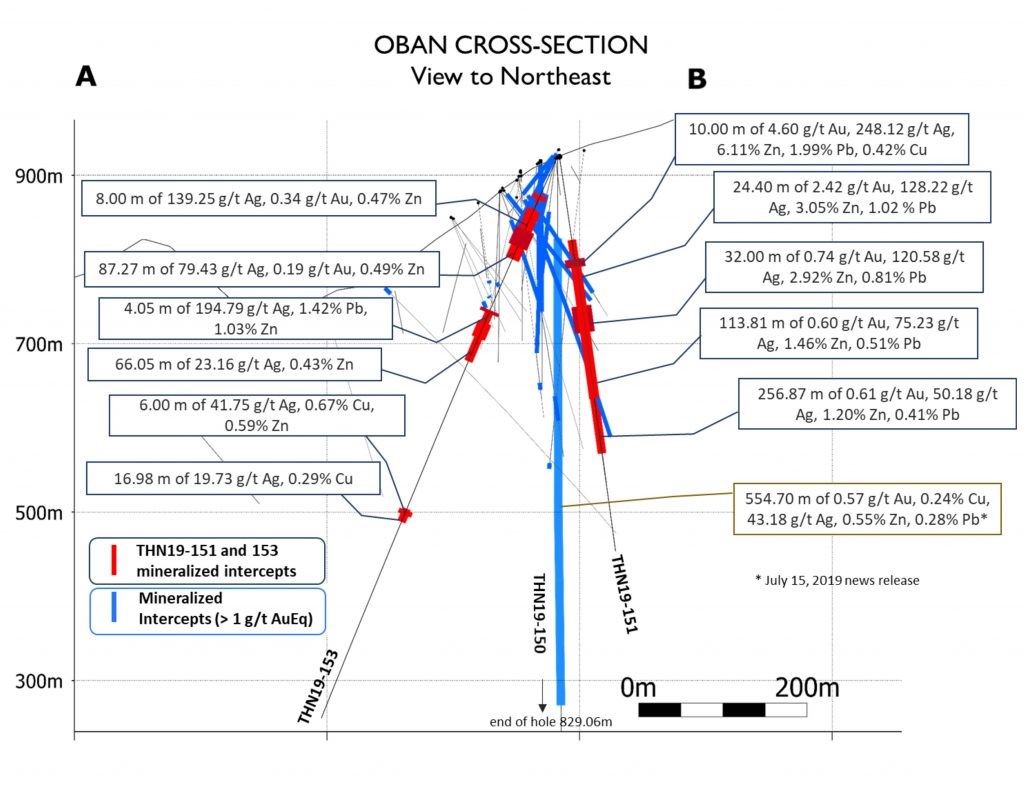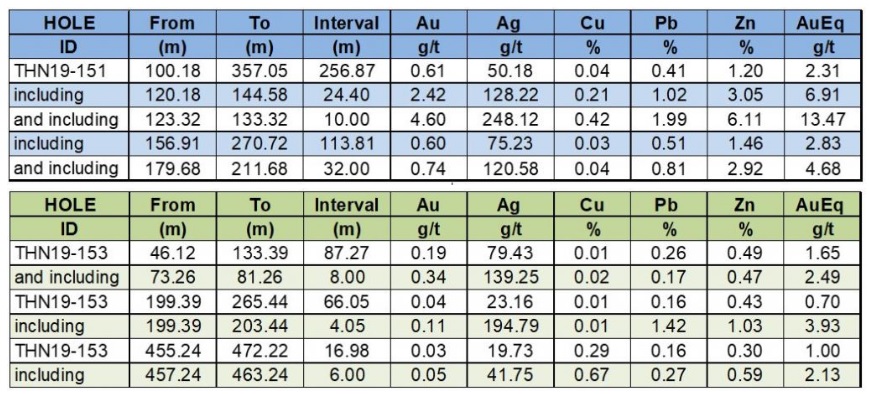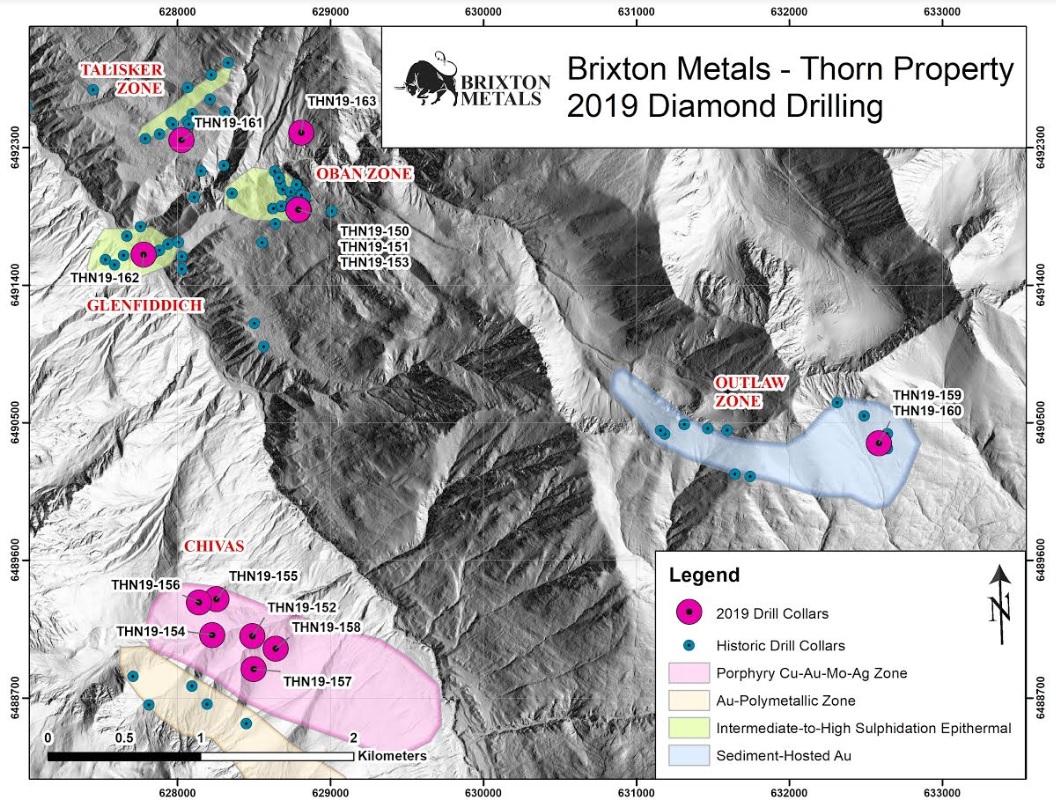
Brixton Metals (BBB.V) has released the assay results of holes 151 and 153 which were drilled next to hole 150 which discovered a thick layer of polymetallic mineralization (almost 555 meters containing 0.57 g/t gold, 0.24% copper, 43.2 g/t silver and 0.83% ZnPb) earlier this year. Hole 151 yielded the best results with a thick interval of almost 257 meters containing 0.61 g/t gold, 50.2 g/t silver, 0.04% copper and 1.61% ZnPb (which results in a gold-equivalent grade of 2.31 g/t) starting at a depth of just 100 meters.
This hole also contained several narrower but higher-grade zones like 10 meters at 13.47 g/t AuEq and 24.4 meters containing 6.91 g/t AuEq in a similar mix of precious metals and base metals. Interestingly, the copper values are a bit lower and the ZnPb values are higher than in hole 150.

Hole 153 was drilled from the same drill pad as holes 150 and 151, but in the other direction. This hole was a bit weaker as only the upper zone appears to be of economic interest (at this point). 87 meters at 1.65 g/t AuEq is fine, but the 66 meters containing 0.7 g/t AuEq and 17 meters of 1 g/t AuEq are very likely respectively a bit too ‘light’ on grade and thickness to be viable at this point in time.

What both holes do prove is the relative thickness of the mineralized system at the Oban zone. Brixton Metals has also drilled one hole about 500 meters north of the drill pad and approximately 750 meters northwest and 1 kilometer towards the west-southwest on respectively the Talisker and Glenfiddich zones. Results from those holes, as well as from the two holes at the Outlaw zone and 6 holes from the Chivas zone should be released in the near future.
Disclosure: The author has a long position in Brixton Metals. Brixton is a sponsor of the website.

